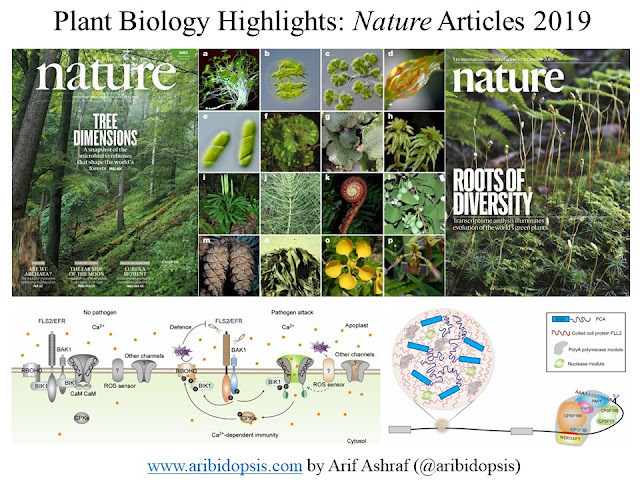Why Arabidopsis Why: Alzheimer's Disease
In previous two posts of this series, I picked up two examples (Cauliflower & Ethylene Signaling) where our gained knowledge from Arabidopsis had been used on other plants. But this post will take us one more step forward. I will go through an amazing story where research on Arabidopsis sheds light on medical research. Probably, you got some idea from the title.
Auxin is highly studied plant hormone for around 130 years, if we count it from Darwin and his son's research. But, the understanding about auxin transport and signaling advanced due to the advent of model plant Arabidopsis in research. Now we have better knowledge about auxin perception through its receptors and downstream events. In simplified form, Auxin Responsive Factor (ARF) is repressed by AUX/IAA protein in presence of low level of auxin inside the cell. But, in presence of high level of auxin, repressor AUX/IAA protein has been degraded in an ubiquitin dependent manner. Interesting point to mention that ubiquitin pathway is present not only plants, but also eastablished in eukaryotes also. Figure provided below is the easiest depiction of that described event. (Plant Biology: Sticking with Auxin, Tom Guilfoyle, Nature, 2007)

AXR1 was first identified protein for auxin response in Arabidopsis. Later it has been found that AXR1 activates ubiquitin related protein RUB1 onto CUL1, a subunit of a ubiquitin related protein ligase (E3) called SCF (SKP1 CDC53 F-box). Another important receptor for auxin is TIR1. TIR1 is also a member of F-box family of proteins. Studies in yeast and animal indicate that F-box proteins are part of an E3 ubiquitin ligase complex or typically known as SCF. Identification of axr1 and tir1 mutants gave the idea that probably ubiquitin mediated pathway works on auxin signaling.
From animal system it has been found that animal ortholog of RUB1, Nedd8 is required for SCF function. More precisely, RUB1/Nedd8 conjugation pathway is conserved in both plants and animals. Important point to mention here is that altered neddylation leads to Alzheimer's disease. We can observe accumulation of beta amyloid plaques in the brains of Alzheimer's patients. And, the source of these plaques are the result of binding between APP-AB1 with Amyloid Percursor Protein (APP). The significance or details mechanism of this binding is still mysterious. But recent studies showed that the binding of APP with APP-AB1 reduces cullin neddylation and alters the activity of different SCFs. In this pathway, substrate for SCF is auxin in plants. But, the substrate in animal system is yet to discover. As the pathway is conserved between animals and plants, study of biochemical process of this pathway will help to understand the underlying mechanism for Alzheimer's disease.




aws interview questions and answers for devops
ReplyDeleteImportant DevOps Interview Questions and Answers for freshers and experienced to start your career in DevOps! 101 DevOps Basic Interview Questions for Freshers.devops interview questions and answers for experienced
Nice! you are sharing such helpful and easy to understandable blog. i have no words for say i just say thanks because it is helpful for me. Looking for top-notch online tuition for Class 7? Ziyyara Edutech offers the finest home tuition classes for Class 7.
ReplyDeleteBook A Free Demo Today visit Online tuition for class 7